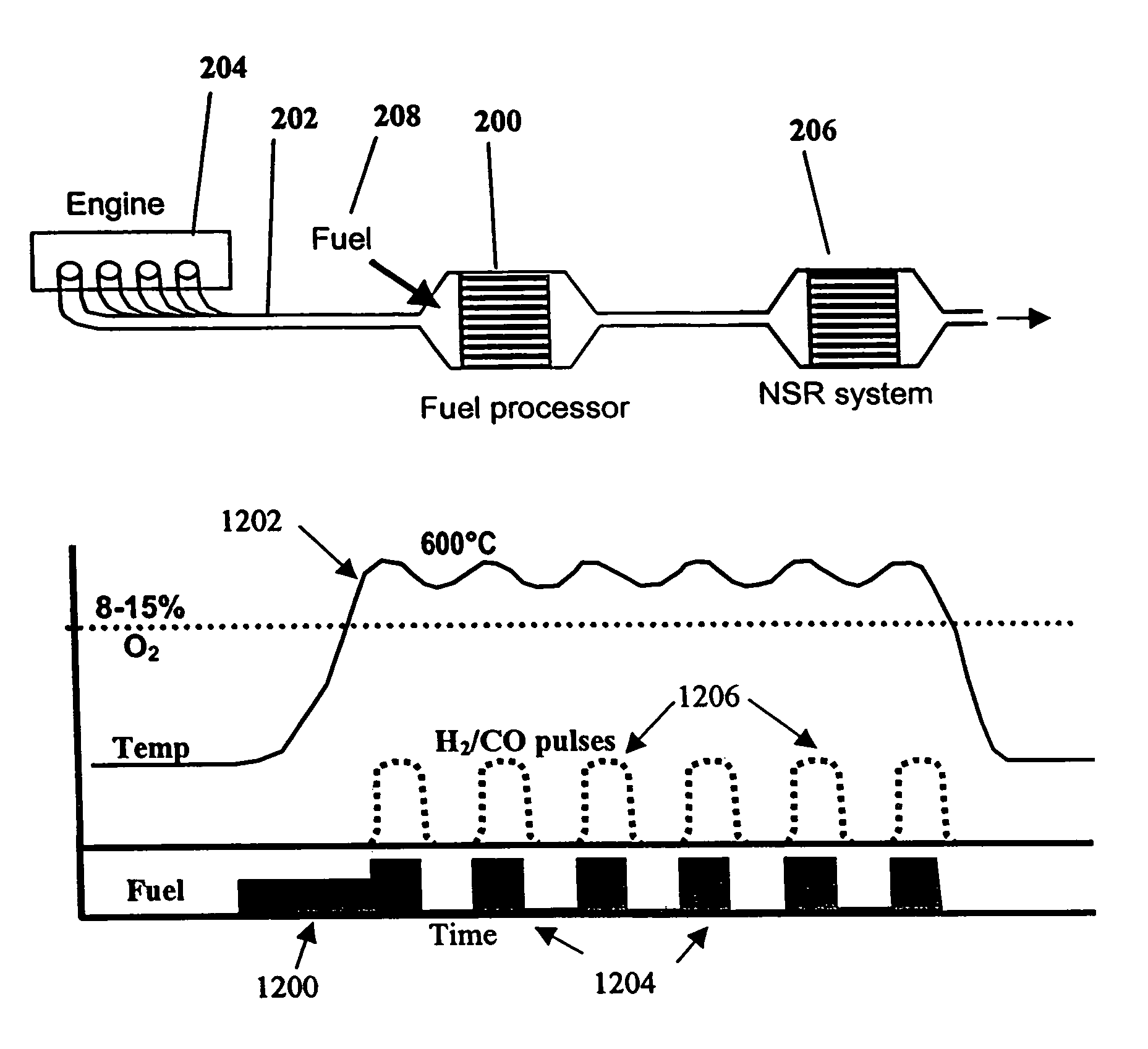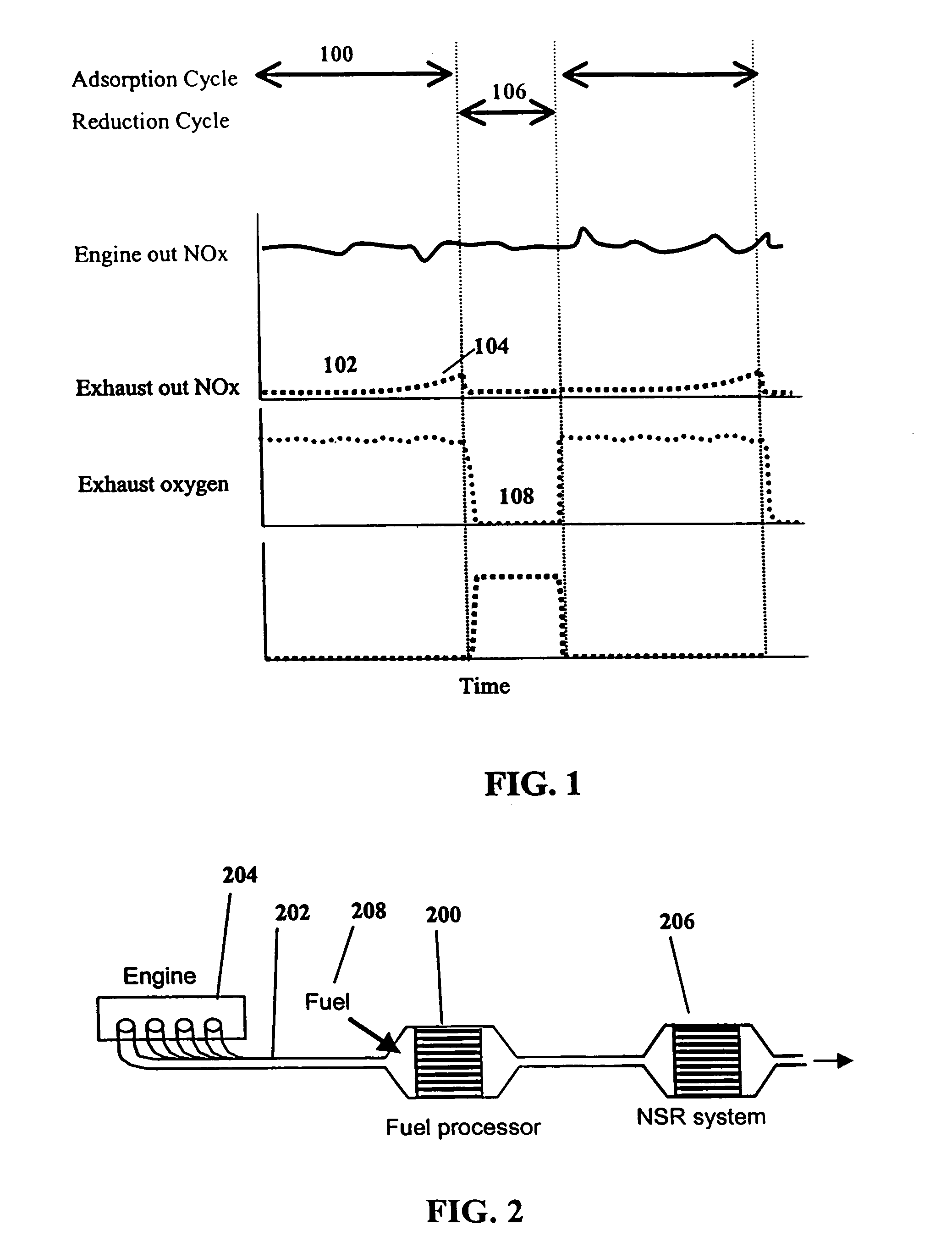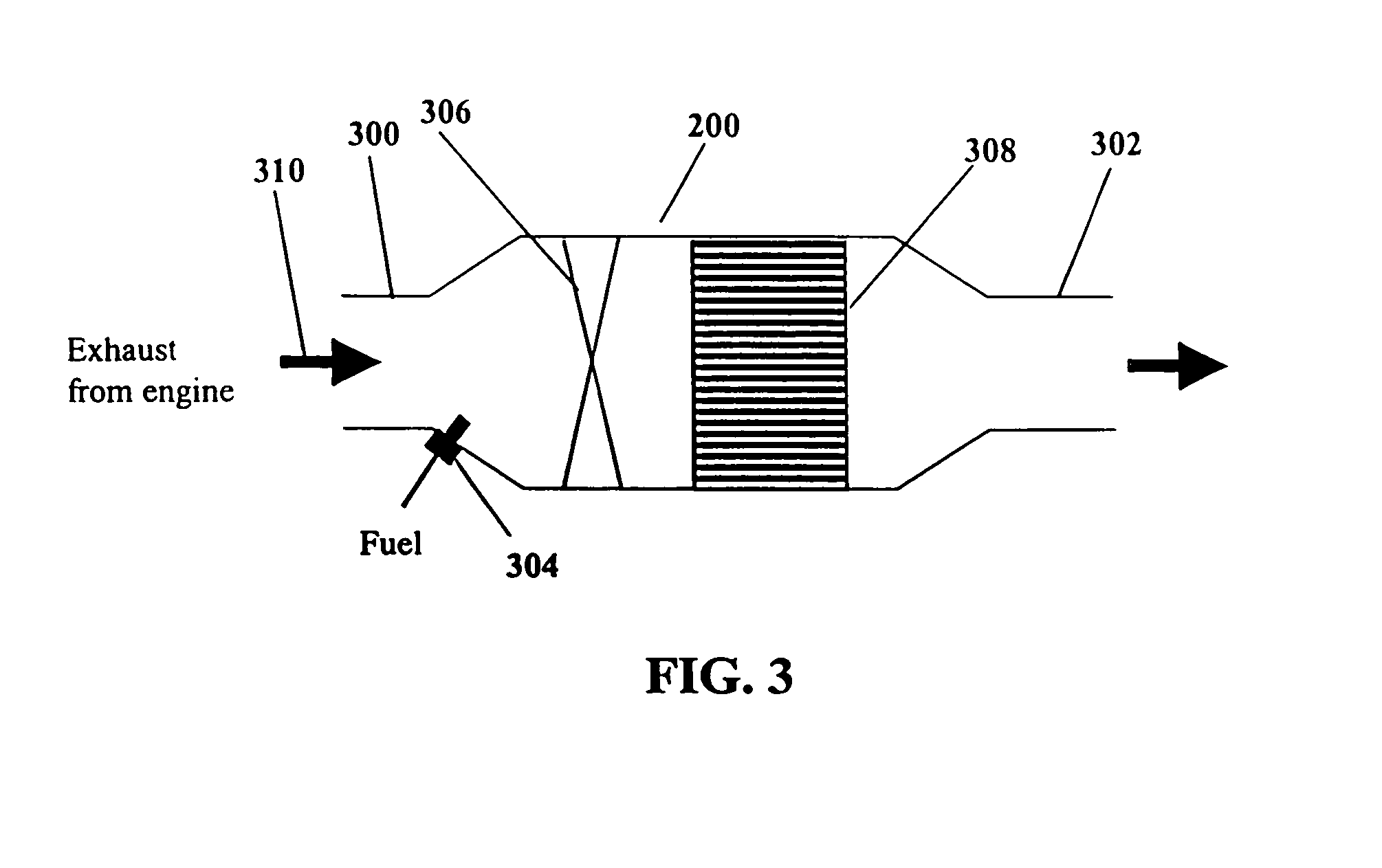System and methods for improved emission control of internal combustion engines using pulsed fuel flow
a technology of internal combustion engine and pulsed fuel flow, which is applied in the direction of metal/metal-oxide/metal-hydroxide catalysts, combustible gas production, and chemical production, etc. it can solve the problems of large excess of oxygen in the overall exhaust mixture of the lean-burning engine, the three-way catalyst technology is generally not suitable for lean-burning engines, and the emissions of nosub>x/sub>and particulate matter, so it can reduce greenhouse gas
- Summary
- Abstract
- Description
- Claims
- Application Information
AI Technical Summary
Benefits of technology
Problems solved by technology
Method used
Image
Examples
example 1
[0113]A monolithic catalyst was prepared as described in U.S. Pat. No. 5,259,754 to Dalla Betta et. al. Rhodium trichloride was dissolved in deionized water at a concentration of about 0.18 g Rh / cc and then zirconium oxide powder with a surface area of about 75 m2 / g was added with stirring. While stirring the mixture, a solution of 20% ammonium hydroxide in water was then added to a pH of 8. The mixture was then evaporated to dryness and the resulting powder calcined in air at 700° C. for 10 hours. The final rhodium concentration was 5.5% Rh by weight on the final catalyst. The Rh / ZrO2 catalyst was slurried with water and a 10% by weight of a 20% zirconium acetated solution to form a slurry of about 30% solids.
[0114]A strip of River Lite 20-5Sr from Kawasaki Steel Company with a thickness of 0.050 by 75 mm wide and 3 m length was corrugated to form V-shaped channels across the 75 mm width with the V-channels in a herringbone pattern. The channels were approximately 0.8 mm in height....
example 2
[0115]The catalyst from Example 1 was placed in a flow reactor comprising a gas supply and mass flowmeters for air, nitrogen and helium as a mass spectrometer quantitative tracer, an electric heater, an air assist sprayer for water, a second air assist sprayer for diesel fuel and a static mixer upstream of the catalyst. The catalyst was contained in a 50 mm diameter insulated section with thermocouple temperature sensors upstream and downstream of the catalyst. A sampling probe for a mass spectrometer was located about 50 cm downstream of the catalyst outlet. Air, nitrogen and water flow was adjusted to form a mixer flowing at 800 SLPM (standard liters per minute) with a composition of 5% H2O, 8% O2, 0.3% He and the balance N2. This mixture was then heated to 370° C. using the electric heater. Results of the tests conducted are provided in FIG. 8.
[0116]FIG. 8A shows the mass spectrometer signal for H2 and CO2 converted to concentration units of percent by volume. FIG. 8B shows the t...
example 3
[0118]FIG. 9 shows another example of hydrogen pulse generation. The catalyst used in this example was prepared in a manner similar to that of Example 1 with the exception that the metal foil was corrugated to have a channel height of 1.2 mm. Air, nitrogen and water flow was adjusted to form a mixture flowing at 200 SLPM (standard liters per minute) with a composition of 8% H2O, 5% O2, 0.3% He and the balance N2. This mixture was then heated to 300° C. using the electric heater. Graph A shows the mass spectrometer signal for H2 and CO2 converted to concentration units of percent by volume. Graph B shows the temperature of the gas at the outlet of the catalyst 906 and inside the catalyst at one inch from the outlet 904 as measured by two thermocouples. Graph C shows the fuel flow in g / min as set by the control system. At time equal to 2630 seconds, fuel was turned on at 1.8 gm / minute flow rate. This fuel was combusted on the catalyst and the thermocouple near the catalyst inlet rose ...
PUM
| Property | Measurement | Unit |
|---|---|---|
| temperature | aaaaa | aaaaa |
| temperature | aaaaa | aaaaa |
| temperatures | aaaaa | aaaaa |
Abstract
Description
Claims
Application Information
 Login to View More
Login to View More - R&D
- Intellectual Property
- Life Sciences
- Materials
- Tech Scout
- Unparalleled Data Quality
- Higher Quality Content
- 60% Fewer Hallucinations
Browse by: Latest US Patents, China's latest patents, Technical Efficacy Thesaurus, Application Domain, Technology Topic, Popular Technical Reports.
© 2025 PatSnap. All rights reserved.Legal|Privacy policy|Modern Slavery Act Transparency Statement|Sitemap|About US| Contact US: help@patsnap.com



